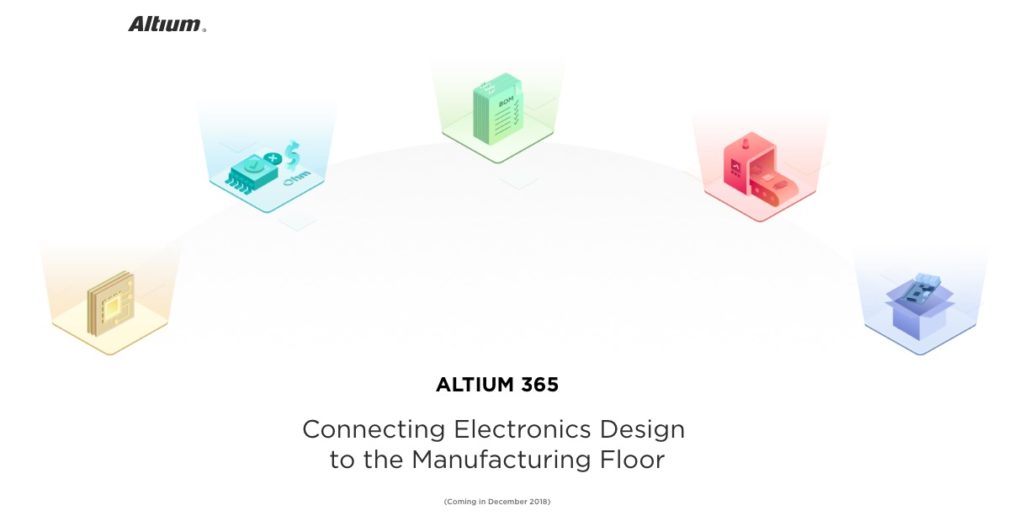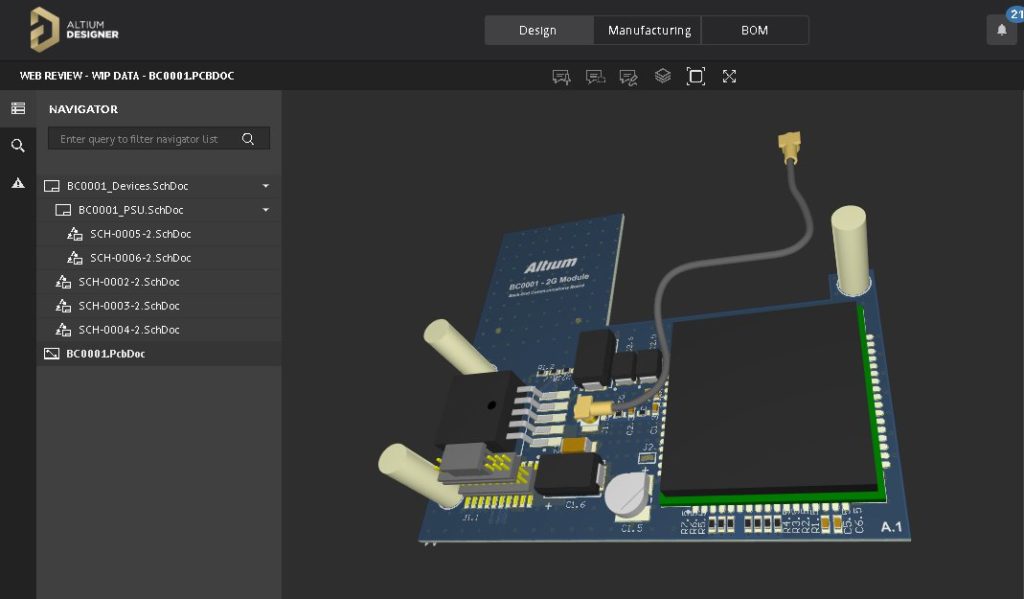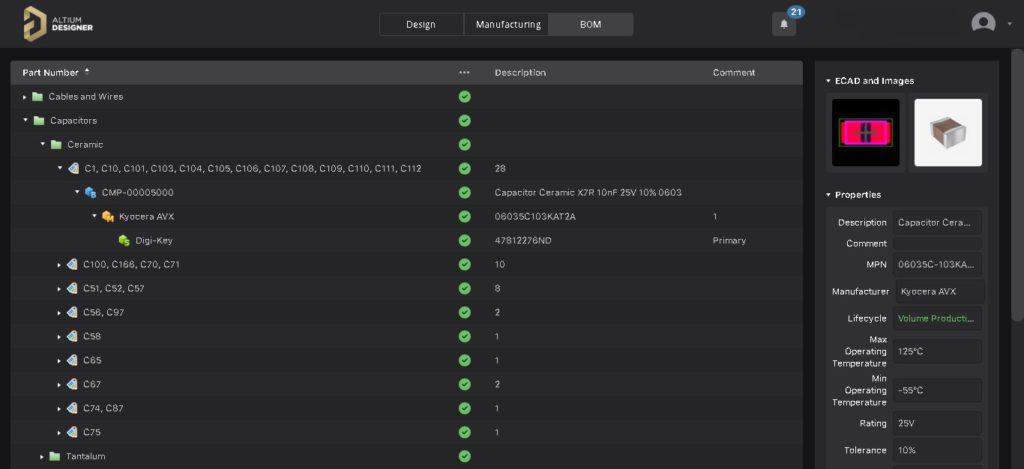
Altium is a software outfit developing design applications (CAD) for PCB and electronics. In the world of growing “PCB everywhere” trend, the space is growing. It is almost guaranteed that every single piece of equipment in front of you has PCB and it must be designed and manufactured. Democratization is coming to manufacturing. It demands to bring easy to adopt products, available via browsers and using subscription business model.
Altium was on the acquisition spree for the last few years acquiring electronic content providers (Octopart and Ciiva), Enterprise PLM integrator (Perception Software) and Toronto-based startup developing cloud-based CAD for electronics (Upverter). All together it was a clear indicator that Altium will be trying to get beyond their current desktop application software and build modern web (cloud) based software package.
Few days ago, Altium announced new web based product – Altium 365. Navigate to Altium website to read more – Altium previews “first step” in connecting electronic design to the manufacturing floor.
With the vision of one day providing designers with real-time feedback on the manufacturability of their designs directly from manufacturing equipment, Altium 365 allows designers to share working schematics and 3D board designs with manufacturers who can comment and markup designs in real time using only a web browser. This accelerates the process of going from design concept to manufactured board.
“Today I have to release a design in flat files, spreadsheets, and images, send it to a manufacturer, and wait two days to get something back — in yet another format — that tells me how to adjust my design so that they can build it,” said Jeremy Blum, director of hardware at Shaper Tools. “And for every design I generally have to do that 3 or 4 times.”
Altium 365 makes it easy to keep product design and manufacturing in sync. Designers simply share any design with a manufacturing partner, and that partner can interact with the design from any device, on any operating system, and guide the designer towards choices that will assure that the board is manufacturable.
All about circuits blog can give you a bit more information – Altium Announces New Cloud-Based Design Environment with Eye Towards Collaboration: Altium 365. The goal is actually sounds bigger than just PCB design – it includes mechanical, purchasing, manufacturing collaboration.
As explained by Altium’s COO Ted Pawela, the platform was created with an eye towards collaboration: “Altium 365 takes Altium Designer from the desktop to multi-device, multi-platform, and multi-operating system. It actually takes a design and puts it in the hands of everybody that is involved in the process of going from idea to a realized product (mechanical, purchasing, manufacturing, etc…).”
Here are few screenshots of design and bill of materials environment.


Even Altium intent to develop cloud based tools was almost predicted by their acquisition strategy, the realization made me think about few interesting trajectories in multi-disciplinary design. In traditional design environment everyone is using its own design tool. Mechanical engineer can work with Solidworks when PCB designer will be doing Altium work. Both systems can manage files (each system has PDM applications), but then their work must be consolidated. While consolidation usually bad, this is a place where all providers of engineering and manufacturing companies are aiming for.these days, because collaboration is key factor that can make companies to become more competitive. Here are few examples of technologies developed for unique aspects of collaboration – Onshape, xDesign, Autodesk 360, OpenBOM, CoLab Software and some others..
Altium 365 is clearly joining the race toward improving collaboration between functional roles in a single organization, and also between multiple organizations. Contract manufacturing is on the rise and in many companies PCB development is outsourced to contractors.
Coordination between different group of engineers and contractor is complex and messy. This is a place where new technologies can simplify data management and a process by connecting silos and dots together. Traditionally mechanical design is sort of “leading” the process because in most of the situations a product usually assembled as a mechanical assembly with usage of PCB and other electronic elements. It will be interesting to see how collaborative applications coming from MCAD, ECAD and PCB design vendors will co-exist and collaborate. I can see an additional competitive element here.
Altium is not alone in this race towards providing a better collaboration and connect engineering and shopfloor. For many years, it is a traditional space for PLM vendors, even most of PLM technologies are too complex and never adopted by electronic design teams. Autodesk acquired Eagle few years ago and I’m expecting to see Eagle version of collaboration embedded into Autodesk Fusion product line. Solidworks has its own Solidworks PCB product (which is actually developed in a collaboration with Altium). On the high end of the market Siemens PLM acquired Mentor Graphic, which will bring more collaboration between Solid Edge and PCB design tools from Mentor (check my blog from Solid Edge University).
What is my conclusion? Altium 365 is a confirmation that engineering software is looking how to get out of silos and provide better options for engineers, production planners, contractors and everyone involved into product development to collaborate in a better way. As you know, I’m a big fan of using cloud technologies for collaboration. Desktop CAD and Excel spreadsheet never been developed to support collaboration. Just my thoughts…
Best, Oleg
Disclaimer: I’m co-founder and CEO of OpenBOM developing cloud based bill of materials and inventory management tool for manufacturing companies, hardware startups and supply chain. My opinion can be unintentionally biased
The post Altium 365 is coming to the cloud. Trajectory of engineering to manufacturing collaboration appeared first on Beyond PLM (Product Lifecycle Management) Blog.



Be the first to post a comment.